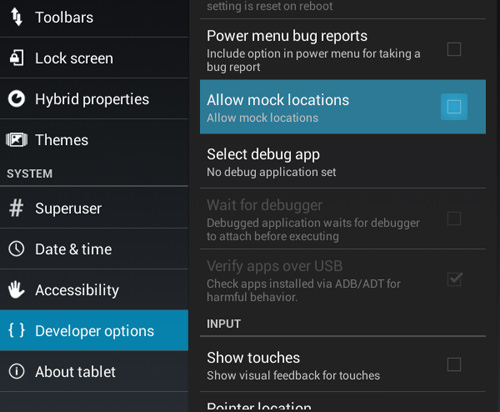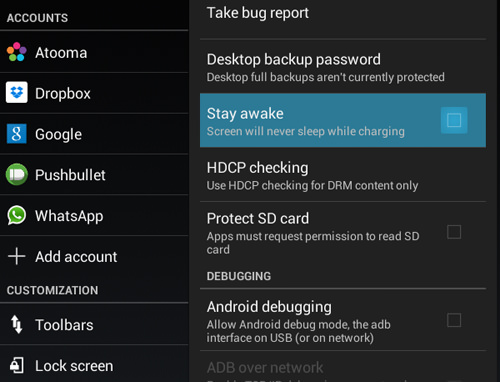10 Hidden Features You Can Find In Android Developer Options
Do you notice that your Android device has a "developer options" feature hidden somewhere? There are many things you can do on your Android but there’s more you can do when you have this option enabled. From speeding up your device by turning animations off, to obtaining higher quality rendering for a good gameplay, there are plenty of features you can enable from the Android Developer Options section.
Note that this is not for everyone – some of you may not want to change anything in fear of "messing up" your mobile device. Not to worry, just backtrack and change the setting back. For some phones, you can enable developer options by going to Settings > About, then tapping repeatedly on Build Number until Developer Options is enabled.
10 Useful Android Tips & Tricks
Whether you are new to Android and eager to try out every available option you see on the... Read more
1. Enable and Disabling USB Debugging
You probably already noticed that most Android-related tools on your PC will require you to enable USB Debugging for the tool to run properly. That because without it enabled, the tools cannot establish a connection between your device and your desktop. To enable USB Debugging:
- Go to Settings > Developer Options.
- Tick on the USB Debugging checkbox.
- Select OK when you’re prompted with a message saying "Allow USB Debugging?".

2. Create Desktop Backup Password
Before you create a backup using Android tools on your desktop, you can first create a password for your backup in the developer options. To put protection on your backup from being accessed easily:
- Head to Settings > Developer Options.
- Tap on Desktop backup password.
- Fill in the current password, then type and retype the new password for full backup.

3. Tweak Animation Settings
When you transition from screen to screen on your Android device you will notice that there is animation added in between. You can choose to speed up this animation or turn it off entirely. The lower the number you choose, the faster the animation will be.
- Go to Settings > Developer Options.
- Scroll down and look for Window animation scale, Transition animation scale, and Animator duration scale.
- Adjust the scale for the animation you want. The greater the number, the slower the animation (and the longer you have to wait).

4. Enable MSAA For OpenGL Games
If you like to play games on your Android device and you’re playing it using high-end Android devices, you might want to force enable MSAA to obtain a higher quality rendering of your in game graphics. This feature is turned off in some games by default because it can drain your device’s battery rather quickly. To enable FXAA:
- Head to Settings > Developer Options.
- Tap on Force 4x MSAA to enable it.

5. Allow Mock Location
To be able to fake your current GPS location, you need an app. But to use that app, you will need to first allow Mock Location for the app to work. Enable Mock Location in two steps.
- Go to Settings > Developer Options.
- Look for Allow Mock Location and tick on it to enable.

6. Stay Awake While Charging
When you charge your phone, the screen of the device will automatically turn off. If for some reason you want it to stay awake, you can do that with these two steps:
- Go to Settings > Developer Options.
- Tap on Stay Awake to tick it, thus enabling the feature.

7. Display CPU Usage Overlay
Need to keep an eye on the CPU usage of your device? There is a way to get an overlay to show the processes that are currently being use by your CPU. To display CPU usage, follow the tips below. (Note that this shouldn’t be turned on all the time – as the number of processes increase, it minimises the space you can see in your screen).
- Head to Settings > Developer Options.
- Tick on Show CPU Usage to enable it.
- You will see an overlay of your current CPU Usage on the right side of the screen.

8. Don’t Keep App Activities
Your Android app activities are still intact even after you have exited from your app. Most of your apps relies on local cached data on Android so that they can load faster and will not face any forced close moments. However, there may be apps that use a lot of activities. You can choose to not keep these activities with these steps:
- Head to Settings > Developer Options.
- Tick on Don’t keep activities.
- You can switch back anytime by unticking the disable.

9. Switch Dalvik To ART
Art is a new experimental runtime by Google that is supposed to replace Dalvik in the near future as it is faster. If you want to test run ART on your device, you will need an Android device running at least Kit Kat 4.4 and above. To set this up:
- Head to Settings > Developer options.
- Tap on Select runtime and choose Use ART.
- Note that ART is still experimental and not many apps support it, hence it may turn your device slower. If you experience this, switch back to Dalvik.

10. Enable Wireless Display Certifications
This option is only useful if you own a Miracast-ready display (or something else of a similar technology), to transmit your Android content to your TV. To watch Youtube videos on your Miracast-ready display, you will need to enable Wireless Display Certifications. To do that, follow the steps below.
- Go to Settings > Developer options.
- Then look for Wireless display certification and tick it.
